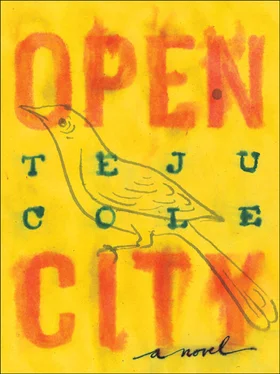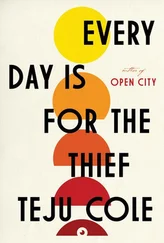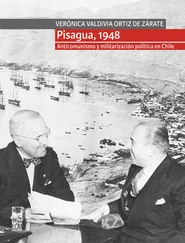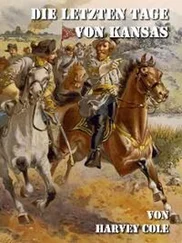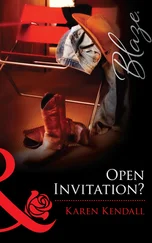The artifacts on display, most from the eighteenth and nineteenth centuries — weather vanes, ornaments, quilts, paintings — evoked the agrarian life of the new American country as well as the half-remembered traditions of the old European ones. It was the art of a country that had an aristocracy but did not have the patronage of courts: a simple, open-faced, and awkward art. At the landing of the first flight of stairs, I saw an oil portrait of a young girl in a starchy red dress holding a white cat. A dog peeked out from under her chair. The details were saccharine, but they could not obscure the force and beauty of the painting.
The artists featured at the museum were, in almost every case, working outside the elite tradition. They lacked formal training, but their work had soul. The sense of having wandered into the past was complete once I reached the third floor of the museum. The gallery had a row of slender white columns running through its middle, and the floors were polished cherrywood. These two elements echoed the colonial architecture of the New England and Middle Colonies.
That floor, as well as the one just below it, was given over to a special exhibition of the paintings of John Brewster. Brewster, the son of a New England doctor of the same name, had modest facility, but the scale of the exhibition made it clear that he had been much in demand as an artist. The gallery was quiet and calm and, save for the guard who stood in a corner, I was the only person there. This heightened the feeling of quietness I got from almost all the portraits. The stillness of the people depicted was certainly part of it, as was the sober color palette of each panel, but there was something more, something harder to define: an air of hermeticism. Each of the portraits was a sealed-away world, visible from without, but impossible to enter. This was truest of Brewster’s many portraits of children, all of them self-possessed in their infantile bodies, and often with whimsical elements in their outfits, but with the faces, without exception, serious, more serious even than those of the adults, a gravity all out of keeping with their tender ages. Each child stood in a doll-like pose, and was brought to life by an incisive gaze. The effect was unsettling. The key, as I found out, was that John Brewster was profoundly deaf, and the same was true of many of the children he portrayed. Some of them were pupils at the Connecticut Asylum for the Education and Instruction of Deaf and Dumb Persons, which had been founded in 1817 as the country’s first school for the deaf. Brewster was enrolled for three years there as an adult student, and it was while he was there that what later became known as American Sign Language was developed.
As I contemplated the silent world before me, I thought of the many romantic ideas attached to blindness. Ideas of unusual sensitivity and genius were evoked by the names of Milton, Blind Lemon Jefferson, Borges, Ray Charles; to lose physical sight, it is thought, is to gain second sight. One door closes and another, greater one, opens. Homer’s blindness, many believe, is a kind of spiritual channel, a shortcut to the gifts of memory and of prophecy. When I was a child in Lagos, there was a blind, wandering bard, a man who was held in the greatest awe for his spiritual gifts. When he sang his songs, he left each person with the feeling that, in hearing him, they had somehow touched the numinous, or been touched by it. Once, in a crowded market at Ojuelegba, sometime in the early eighties, I saw him. It was from quite a distance, but I remember (or imagine that I remember) his large yellow eyes, calcified to a gray color at the pupils, his frightening mien, and the big, dirty mantle he wore. He sang in a plaintive and high-pitched voice, in deep, proverbial Yoruba that was impossible for me to follow. Afterward, I imagined that I had seen something like an aura around him, a spiritual apartness that moved all his hearers to reach into their purses and put something in the bowl his assistant boy carried.
Such is the narrative around blindness. Not so with deafness which, as in the case of one of my great-uncles, was often seen as merely unfortunate. Many deaf people, it occurred to me just then, were treated as if they were mentally retarded; even the expression “deaf and dumb,” far from being a simple description of a physiological condition, had a pejorative sense.
Standing before Brewster’s portraits, my mind quiet, I saw the paintings as records of a silent transaction between artist and subject. A laden brush, in depositing paint on the panel or canvas, hardly registers a sound, and how great is the peace palpable in those great artists of stillness: Vermeer, Chardin, Hammershøi. The silence was even more profound, I thought, as I stood alone in that gallery, when the private world of the artist was total in its quietness. Unlike those other painters, Brewster hadn’t resorted to indirect gazes or chiaroscuro to communicate the silence of his world. The faces were well-lit and frontal, and yet they were quiet.
I stood at the window on the third floor and looked outside. The air had shifted from gray to dark blue, and afternoon had become late afternoon. One image drew me back in, a painting of a child holding a bird on a blue thread. The palette, as was usual for Brewster, was dominated by muted colors; the two exceptions were the electric blue of the thread, which coursed across the face of the painting like a bolt of electricity, and the child’s black shoes, which were deeper and blacker than almost anything else in the gallery. The bird represented the child’s soul, as it had in Goya’s portrait of the ill-fated three-year-old Manuel Osorio Manrique de Zúñiga. The child in the Brewster painting looked out with a serene and ethereal expression from the year 1805. He, unlike many of the others painted by Brewster, had his hearing intact. Was this portrait a talisman against death? One child in three at the time died before the age of twenty. Was it a magical wish that the child would hold on to life, as he held on to the string? Francis O. Watts, the subject of the painting, did live. He entered Harvard at fifteen and became a lawyer, married Caroline Goddard, who was from his hometown of Kennebunkport, Maine, and went on to become president of the Young Men’s Christian Association. He eventually died in 1860, fifty-five years after the portrait was made. But, for the moment of the painting, and, therefore, for all time, he is a little boy holding a bird by a blue string, clad in a white chemise with a carefully observed lace frill.
Brewster, born some ten years before the Declaration of Independence, lived his life as an itinerant artist, working all the way from Maine to his native Connecticut and to Eastern New York. He was almost ninety when he died. The elite Federalist milieu of his background had given him access to wealthy, serious-minded patrons (his own ancestors had been on the Mayflower in 1620), but his deafness made him an outsider, and his images were imbued with what that long silence had taught him: concentration, the suspension of time, an unobtrusive wit. In a painting titled One Shoe Off , which held me transfixed the moment I came before it, the neatly tied bow of a shoe on a little girl’s right foot echoed the asterisks of the floor pattern. The other shoe was in her hand, and red pentimenti were visible around the heel and the toes of the now unshod left foot. The child, as secure within her own being as were all Brewster’s children, had an expression that dared the observer to be amused.
I lost all track of time before these images, fell deep into their world, as if all the time between them and me had somehow vanished, so that when the guard came up to me to say the museum was closing, I forgot how to speak and simply looked at him. When I eventually walked down the stairs and out of the museum, it was with the feeling of someone who had returned to the earth from a great distance.
Читать дальше
